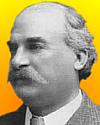
On 15 Feb 1845, Robert Wood Johnson was born, who co-founded the well-known Johnson & Johnson Corporation. In this short profile you can read how this now huge company started with a young man who was an apothecaries' apprentice that started a business making “Benzine” plasters with sleeves rolled up, spreading mush from a pail with a brush!
By adopting the antiseptic ideas of Lister, his company expanded greatly by producing packaged, sterilized wound treatments valuable to country doctors and city surgeons alike. This article comes from the Western Druggist (1893).

On 15 Feb 1564, Galileo Galilei was born. Today's book pick is: Galileo: A Life, by James Jr. Reston. We've all heard about him, but how many of us have read about and have a real knowledge of Galileo? Quoting Galileo's journals and letters, Heston gives the character a presence in a suspenseful narrative as you read about his stormy career, colliding with the church authorities in Rome, the tragic tale of an egotistical scientific genius and his persecution. Travel back to the time of Galileo and feel the shock and wonder as he felt it when he looked through his first perfected telescope and saw the mountains and craters of the Moon, the dance of the moons of Jupiter, and the surprising movements of sunspots. Rather than an extensive study of the scientific discoveries, the author's focus is on Galileo's struggles with the church, loyal supporters and vicious enemies while illuminating the political turmoil of his times.
It is available from Amazon, typically about New from $17.56. Used from $5.69. (As of earlier time of writing - subject to change.)
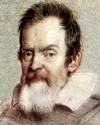 | In questions of science the authority of a thousand is not worth the humble reasoning of a single individual. |
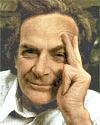 | All things are made of atoms—little particles that move around in perpetual motion, attracting each other when they are a little distance apart, but repelling upon being squeezed into one another. In that one sentence ... there is an enormous amount of information about the world. His suggestion that the most valuable information on scientific knowledge in a single sentence using the fewest words is to state the atomic hypothesis. |
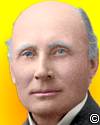 | Familiar things happen, and mankind does not bother about them. It requires a very unusual mind to undertake the analysis of the obvious. |
| Before you look at today's web page, see if you can answer some of these questions about the events that happened on this day. Some of the names are very familiar. Others will likely stump you. Tickle your curiosity with these questions, then check your answers on today's web page. | |
| Births | |
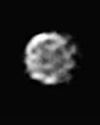 | William Henry Pickering, born 15 Feb 1858, was an American astronomer who discovered a new moon of Saturn, Phoebe, in 1899. This was the first planetary satellite with retrograde motion to be detected, i.e., with orbital motion directed in an opposite sense to that of the planets. How many moons of Saturn were known with this discovery? |
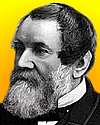 | An American industrialist and inventor, born 15 Feb 1809, is generally credited with the development (from 1831) of the mechanical reaper. Can you name this inventor? |
 | Galileo Galilei, born 15 Feb 1564, was an Italian natural philosopher, astronomer, and mathematician, who applied the new techniques of the scientific method to make significant discoveries in physics and astronomy. His great accomplishments include perfecting (though not inventing) the telescope and consequent contributions to astronomy. He studied the science of motion, inertia, the law of falling bodies, and parabolic trajectories. How many moons of Jupiter did Galileo discover with his telescope? How many can you name? |
| Deaths | |
 | Richard P. Feynman (1918-1988) was an an American theoretical physicist who was probably the most brilliant, influential, and iconoclastic figure in his field in the post-WW II era. He participated in the Manhattan Project as a group leader in the theoretical division, working on estimating how much uranium would be needed to achieve critical mass for the atomic bomb. His name is remembered in a simple notation he developed, now known as Feynman Diagrams What is the subject of Feynman Diagrams? |
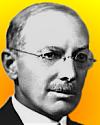 | James Frank Duryea (1869-1967) and his brother Charles Duryea built the first of a certain invention that operated in the United States. What was the invention built by the Duryeas? |
| Events | |
 | On 15 Feb 1942, operation ceased at the landmark eastern terminus of the original San Francisco street cars, first in the world to be propelled by cable. It had been first established by its English inventor, Andrew Smith Halladie (1836-1900), a pioneer manufacturer of wire cables. Since which decade had this cable car terminus been operating? |
Fast answers for the previous newsletter for February 14: supernovae • rendering visible the tracks (as from a radiactive source) of electrically charged particles, which also cause small droplet condensation • radio waves • Captain James Cook • Dolly • Earth's wobble on its axis, from the Latin “nutare” = to nod..
 If you enjoy this newsletter, the website, or wish to offer encouragement or ideas, please send feedback by using your mail reader Reply button.
If you enjoy this newsletter, the website, or wish to offer encouragement or ideas, please send feedback by using your mail reader Reply button. Your click on a Facebook, StumbleUpon, or other social button on the site webpages is also a welcome sign of appreciation. Thank you for using them.
© This newsletter is copyright 2020 by todayinsci.com. Please respect the Webmaster's wishes and do not put copies online of the Newsletter — or any Today in Science History webpage. (If you already have done so, please remove them. Thank you.) Offline use in education is encouraged such as a printout on a bulletin board, or projected for classroom viewing. Online, descriptive links to our pages are welcomed, as these will provide a reader with the most recent revisions, additions and/or corrections of a webpage. For any other copyright questions, please contact the Webmaster by using your mail reader Reply button.
--
If you do not want to receive any more newsletters, Unsubscribe
To update your preferences and to unsubscribe visit this link
Executive Real Estate Business Class
-
"It was like a man with wings. It wasn't like anything you'd see on TV or in a monster movie." ...
About the publisher
Search This Blog
Blog Archive
-
▼
2021
(585)
-
▼
February
(72)
- Mary Seacole | The Spitfire | George Washington
- On This Day for February 28 - Olof Palme assassina...
- On This Day for February 27 - Chile struck by eart...
- On This Day for February 26 - Napoleon's escape fr...
- On This Day for February 25 - Ousting of Marcos in...
- Demystified: How Do Penguins Tell Each Other Apart?
- On This Day for February 24 - U.S. President Andre...
- On This Day for February 23 - Alamo besieged by Sa...
- On This Day for February 22 - Cloning of Dolly, Ge...
- Your essential guide to the Tudors | LGBT+ history...
- On This Day for February 21 - Malcolm X assassinat...
- On This Day in History by OnThisDay.com: You are n...
- February 21: The 1st Romanov Tsar, the 1st Locomot...
- On This Day for February 20 - John Glenn's orbit o...
- On This Day for February 19 - Iwo Jima invaded by ...
- 🎉 Ready for 30% Off Kids' Memberships?
- On This Day for February 18 - Pluto discovered by ...
- Newsletter for Thursday 18 February.
- Demystified: Why Does Salt Melt Ice?
- On This Day for February 17 - Vietnam invaded by C...
- Newsletter for Wednesday 17 February.
- On This Day for February 16 - Power in Cuba seized...
- Newsletter for Tuesday 16 February.
- On This Day for February 15 - USS Maine destroyed,...
- Newsletter for Monday 15 February.
- February 15: The King of Persia, the Human Genome ...
- Who was Saint Valentine?
- On This Day for February 14 - Fatwa issued against...
- Newsletter for Sunday 14 February.
- February 14: Battle of Cape St Vincent, the Teleph...
- On This Day for February 13 - William and Mary cro...
- Newsletter for Saturday 13 February.
- February 13: Baghdad falls to the Mongols, the Bil...
- On This Day for February 12 - Chile's independence...
- Newsletter for Friday 12 February.
- February 12: The Qing Dynasty Ends, The Senate Acq...
- Demystified: Why Do We Say “A Pair of Pants”?
- On This Day for February 11 - St. Bernadette's fir...
- Newsletter for Thursday 11 February.
- February 11: Margaret Thatcher's Rise to Power, Ne...
- Watch ‘Tuskegee Airmen: Legacy of Courage’
- 🇺🇸💰Your Presidents' Day Exclusive Bonus!
- On This Day for February 10 - Kasparov-versus-comp...
- Newsletter for Wednesday 10 February.
- February 10: End of the French-Indian War, HMS Dre...
- All-New Tonight: 'The Food That Built America' Sne...
- On This Day for February 9 - Calcutta restored to ...
- Newsletter for Tuesday 9 February.
- February 9: Massachusetts Rebels, the Battle of Gu...
- On This Day for February 8 - Mary, Queen of Scots,...
- Newsletter for Monday 8 February.
- February 8: Mary Stuart is Decapitated, Napoleon L...
- What did Mary Tudor think of Anne Boleyn and her o...
- On This Day for February 7 - British Invasion laun...
- Newsletter for Sunday 7 February.
- February 7: The 1st English Prince of Wales, the M...
- Newsletter for Saturday 6 February.
- On This Day for February 6 - Accession of Elizabet...
- February 6: Maximilian I and Elizabeth II Ascend t...
- Black History Month: The Tuskegee Airmen Documenta...
- On This Day for February 5 - Punic Wars ended, Han...
- February 5: Congo Taken as a Personal Possession a...
- On This Day for February 4 - Yalta Conference open...
- February 4: The Chinese Song Dynasty, World's Olde...
- Serving Up an All-New Season
- On This Day for February 3 - Fifteenth Amendment t...
- February 3: The Naval Battle of Diu, Universal Suf...
- On This Day for February 2 - Ban on African Nation...
- February 2: New Amsterdam Grows Up, the US Pays Me...
- On This Day for February 1 - Space shuttle Columbi...
- Newsletter for Monday 1 February.
- February 1: Black History Month Starts and a Day o...
-
▼
February
(72)
-
Blogroll
-
About
HistoryFact










0 comments:
Post a Comment